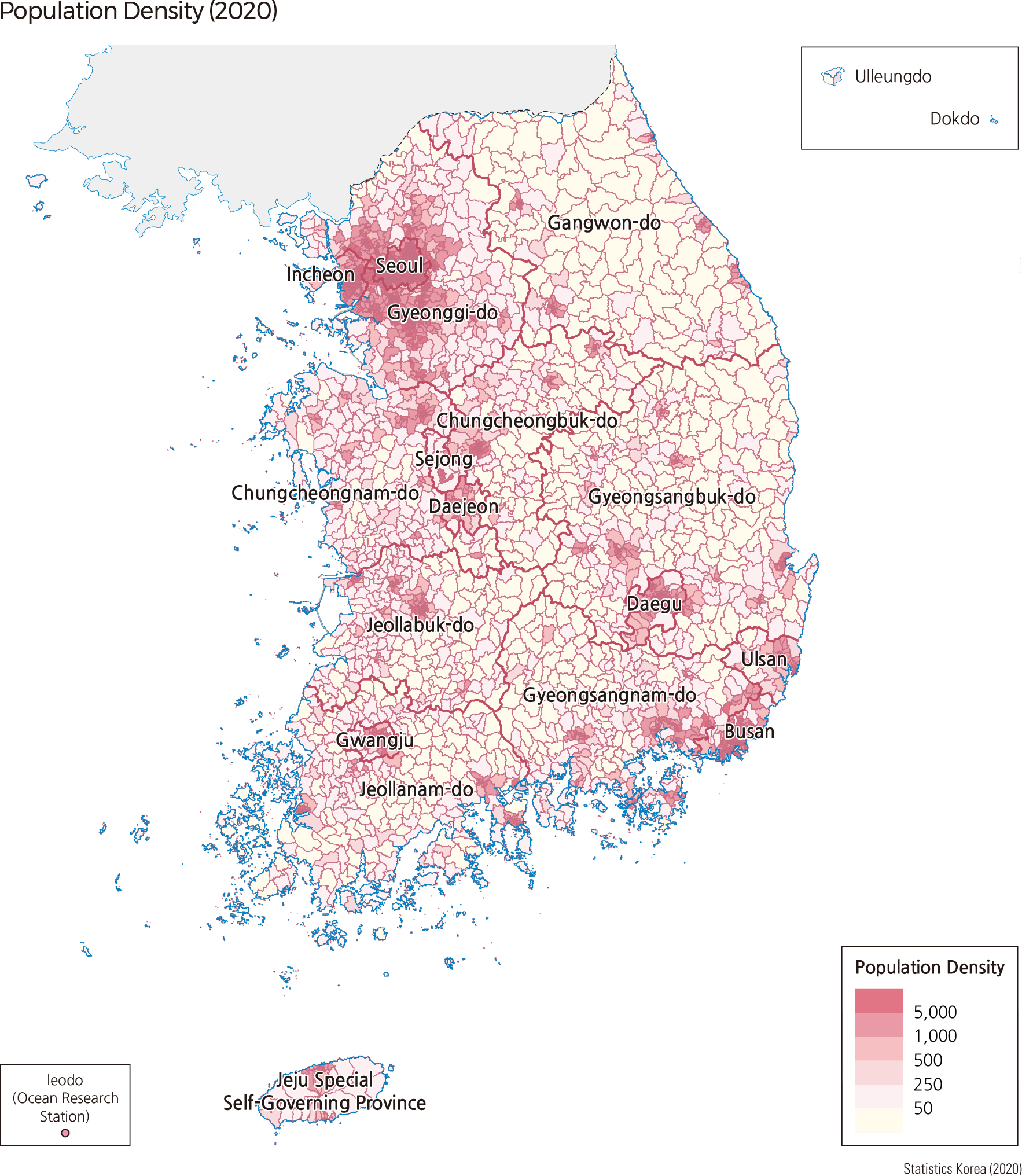English III 2021
The degree of population concentration can be expressed in terms of population density or population proximity index. The population proximity index of an area is the average distance between people, calculated by the square root of the area in m2 divided by the population, assuming an evenly-distributed population in a unit area. Based on Korea’s population with foreigners, the population proximity index has been shortened from 52 m in 1980 to 44 m in 2020, indicating the degree of concentration has partially risen due to increased population. A comparison of the population proximity index in -dong/-eup/-myeon areas reveals its rapid change. The indices were high in most areas, except metropolitan cities in 1980. In particular, they were higher in some parts of Taebaeksanmaek and inland areas with low population densities. In 2000, areas with a high population proximity index were expanded to some parts of west and south coasts, as well as inland areas. Most parts of Korea, except urban areas, had high population proximity in 2020. Overall, Korea’s population is concentrated in urban areas such as the Seoul Metropolitan Area and metropolitan cities. Such changes in population distribution can be reflected in the geographic population centers of individual regions. In the Seoul Metropolitan Area, the population center moved southwestward from 1970 to 2020, which can account for the recent increase in population for the south and west parts of Gyeonggi-do in recent years (low proximity and high density of population). The population center of Gangwon-do tends to move west toward the Seoul Metropolitan Area. In the Chungcheong region, the population center moved southeast towards Daejeon from 1960 to 1990, and its direction has turned north towards the Seoul Metropolitan Area since 1995. In the Yeongnam region, the population center tends to move southeast towards Busan and Ulsan. In the Honam region, the population center tends to move continuously north towards the Seoul Metropolitan Area. Since 1995, the population center of Jeju-do has moved to the urban center of Jeju-si, which is close to the coastal area. Meanwhile, the distance between the two geographic population centers has gotten closer in all provinces except Jeju Special Self-Governing Province. |



